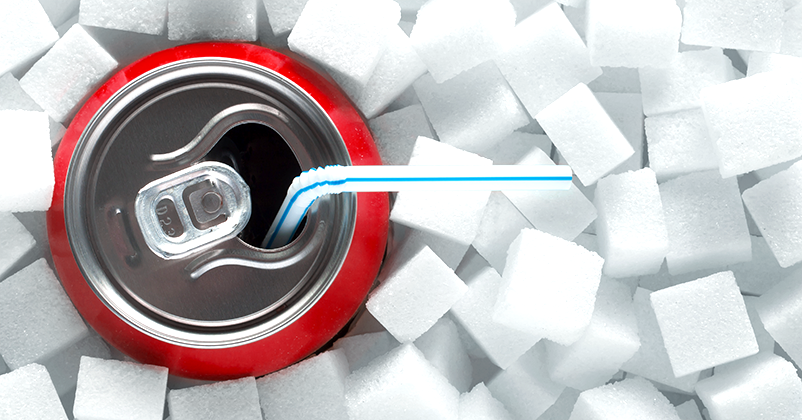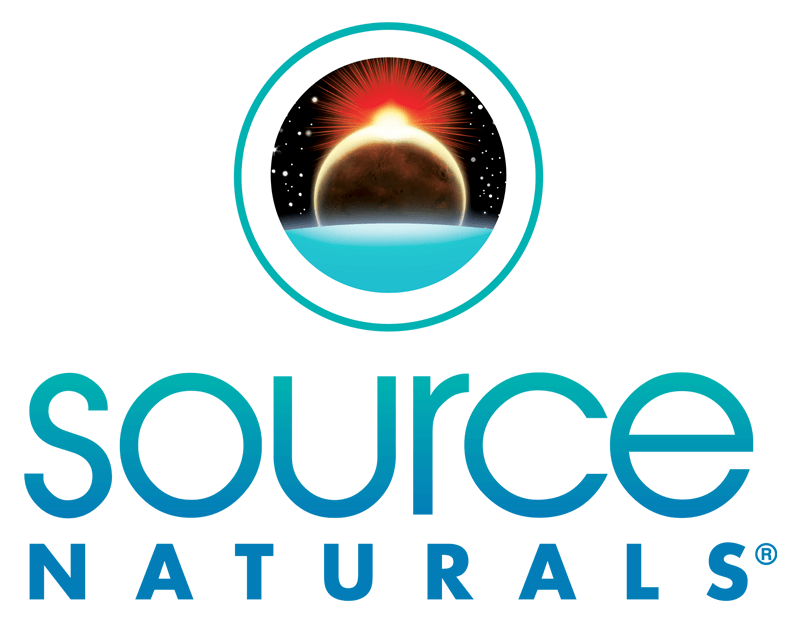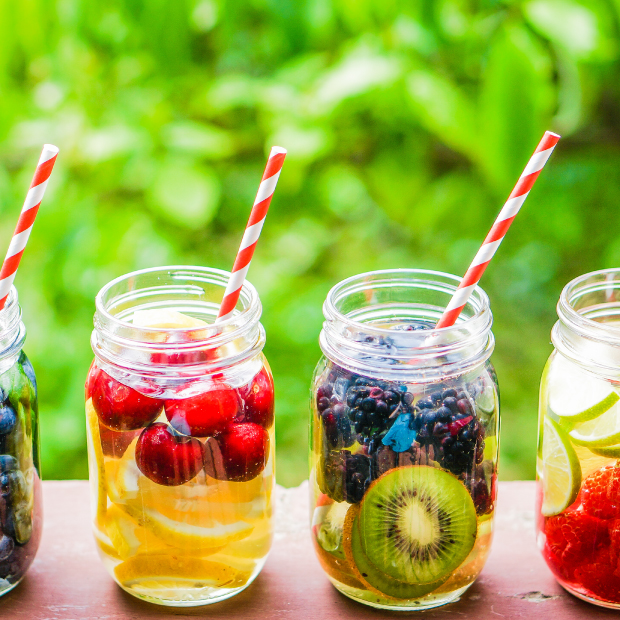
That pretty can of cold, sweet soda on TV looks so friendly. So refreshing. So promising. But it’s all an illusion.
The truth is that sodas (and sugary drinks in general) are just a sneaky way for sugar and other chemicals to invade your body. The addictive sugar-and-acid solution wreaks the same kind of havoc as junk food and hard drugs—and it sets you up for serious diseases that could kill you.
How bad is soda? This bad
Generations of very effective marketing have led Americans to see soda as a refreshing, social drink and companion to food. Soda pop is fun! Who doesn’t like fun?
So strong is that food-fun connection that the average American drinks 45 gallons of sugar-sweetened beverages—primarily soda—every year. Just one 12-ounce can of regular soda has about 150 calories and the equivalent of 10 teaspoons of sugar. Soft drinks are the biggest source of added sugars in our diet: they account for 36% of all the sugar we consume.
Yet soda is neither nutrition nor hydration—it’s a liquid sugar cocktail of lab chemicals and a ton of empty calories. Even at low levels, regular soda consumption sets the table for a whole menu of serious health conditions:
- Obesity, the American epidemic, is soda’s first gift. The extra calories you consume in 1 can of regular soda a day yields 14.5 pounds of extra weight in a year. Soda drinkers are also 50% more likely to develop metabolic syndrome, a group of risk factors that includes high blood pressure, high blood sugar, unhealthy cholesterol levels, and abdominal fat—which, taken together, doubles your risk of heart disease (heart attack, stroke) and increases your risk of diabetes 5 times. Obesity is directly linked to cardiovascular disease and cancers: 70% of cardiovascular disease is linked to obesity, 42% of breast and colon cancers are diagnosed in obese people, and 30% of gallbladder surgeries are related to obesity conditions.
- Drinking 1 serving of soda per day equals a 26% increase in your risk of developing type 2 diabetes. Even if you’re being careful, most 12-ounce cans of soda actually contain 2 servings, so you’re likely to drink more than you intended if you’re just counting bottles or cans.
- Soft drinks are firmly linked to cardiovascular disease, mostly through increased obesity. Drinking 1 can of soda per day increases your risk of heart attack by 20%; drinking 2 cans (or more) per day kicks your risk up to 40%. While people who drink a lot of sugary drinks tend to weigh more, researchers have found that having normal weight doesn’t reduce those risks.
- The combination of sugars, carbonation, and acids in soda easily damages and dissolves your tooth enamel, and promotes bacterial growth in your mouth, all of which leads to tooth decay and gum disease. In some areas of the country, dentists call the condition that results from excessive soda consumption “Mountain Dew Mouth.”
- High levels of phosphate/phosphoric acids—the ingredient that gives soda its tangy flavor—are linked to development of kidney stones.
- The phosphate in soda binds minerals like calcium so that your body can’t use them. If you’re consuming more phosphate than calcium—as you might if you’re drinking a lot of soda—you’re at a greater risk for bone loss. So every soda you drink is actively robbing your bones of the calcium they need. Researchers have linked soda consumption to a higher risk of hip fracture, especially in women.
- The high levels of sodium preservatives in soda reduce the availability of potassium in your body, which can trigger or worsen the symptoms of asthma and excema.
- Drinking 1 can of soda per day gives you a 75% greater risk of developing gout, a very painful form of inflammatory arthritis.
Feel the rush
Unlike real food, the liquid sugar in soda lacks other nutrients—like the fiber in an apple, for example—that would slow the sudden slam of sugar into your body. Within a few minutes of drinking it, soda causes a fast spike in blood sugar: You’re feeling the “sugar rush.”
The sugar spike overwhelms your pancreas, which answers by pumping out insulin to help your cells use the sugar’s energy. But there’s more sugar than all your cells can handle.
So your liver kicks into overdrive to turn as much of that sugar as possible into fat, your body’s way of storing excess energy. Some fat is stashed in the liver itself; the rest goes into your bloodstream, where insulin tells fat cells throughout your body to grab and store it.
A little more than half an hour later, you’ve absorbed the soda’s caffeine. Your blood pressure rises, your pupils enlarge, and your brain’s fatigue receptors are blocked. You’ve reached peak soda energy. Your brain produces dopamine, the feel-good hormone that activates your pleasure and reward centers, and you feel good.
Pay the price: dehydration and depletion
You might feel like the soda is quenching your thirst, but it’s doing just the opposite. The soda’s sugar increases your body’s excretion of calcium. Its phosphoric acid binds calcium, magnesium, and zinc. Its caffeine acts as a potent diuretic, so soon you’ll excrete those minerals—minerals that your body would have used to strengthen your bones and teeth—along with water, sodium, and electrolytes that would have helped you stay hydrated. Drinking soda when you’re thirsty actually makes the problem worse.
By the time the soda has metabolized, you’re dehydrated and depleted. Your blood sugar levels fall—you’re headed for the “sugar crash.” Now you feel fatigue, and your body craves more sugar, more energy. So you reach for another soda (or refill your cup), and you’re off again: another sugar spike, another insulin spike, another crash & crave…and on and on, as long as you keep drinking it.
Over time, this “up & down dysregulation” fire drill affects your cells’ sensitivity to insulin, which leads to insulin resistance and ultimately ends in type 2 diabetes.
By the way, this is what soda’s doing in your kids’ bodies, too.
Diet soda is no different
Research shows that, over the long term, drinking even 1 diet soda per day puts you at higher risk for the bad health outcomes that you’re probably drinking diet to avoid: type 2 diabetes, metabolic syndrome, high blood pressure, and stroke.
Zero-calorie sweeteners have been shown to change the gut microbes in mice, such that they developed insulin resistance and glucose intolerance even without the excessive sugars of regular soda.
Artificial sweeteners also trigger insulin, plus an even greater activation of your brain’s reward centers than regular sugar does—which throws off your brain’s “sweetness sensors” and appetite control signals. As a result, it takes more calories than it should for your brain to realize that you’ve consumed enough energy. Over time, you could end up eating more as a result of your “diet” drink.
Choose healthier hydration
Your cells (if not your taste buds) want water. According to the experts at Harvard’s TC Chan School of Public Health, pure H2O provides “everything your body needs to restore fluids lost through normal metabolism, breathing, sweating, and removal of waste”—it’s perfect for quenching your thirst and rehydrating your cells. For a refreshing flavor change, you can infuse your water with herbs, cucumber, even slices of your favorite citrus and other fruits.
Other healthy beverage options can also deliver useful nutrients to your body:
- Unsweetened coffee—both regular and decaf—contains antioxidants, magnesium, and chromium, and shows some protective benefits against diabetes. (Be sure to watch your caffeine intake.)
- Black, green, or herbal teas have less (or no) caffeine and deliver high levels of antioxidants called flavonoids that are good for your heart, and which may be protective against some cancers.
- Dairy milk contains nutrients—like protein, calcium, potassium, and vitamin D—that are important for healthy bones. Unsweetened nondairy milks—like soy and almond—have calcium, making them good choices if you’re lactose intolerant or vegan.
Soda is a deceptively dangerous drink
Regular or diet, soda takes a terrible toll on your body in exchange for a few moments of sweet taste—so dump it! If you want to feel better and be healthier, breaking the soda habit once and for all is one of the most important lifestyle changes you can make.
References
To learn more about soda and its impact on your health, check out the resources we used for this article.
American Diabetes Association, “Diabetes Myths,” Diabetes.org, Aug. 17, 2015. Accessed Jan. 5, 2017.
Anna Schaefer, “What Causes Mountain Dew Mouth?” Healthline.com, Feb. 25, 2015. Accessed Jan. 16, 2017.
Honor Whiteman, “How Coca-Cola Affects Your Body When You Drink It,” MedicalNewsToday.com, August 2015. Accessed July 18, 2016.
Julie Edgar “Types of Teas and Their Health Benefits,” WebMD.com, Mar. 20, 2009. Accessed Jan. 18, 2017.
Keri Gans, “Which Type of Milk Is Healthiest?” US News & World Report Eat+Run, Mar. 18, 2015. Accessed Jan. 17, 2017.
Loren Grush, “How Bad Is Soda, Really?” Prevention.com republished from FoxNews.com, Aug. 17, 2013. Accessed Jul. 25, 2016.
Mandy Oaklander, “Should I Drink Diet Soda?” Time.com, Dec. 11, 2014. Accessed July 25, 2016.
Mary Squillace, “10 Reasons to Give Up Diet Soda,” Health.com. Accessed Jul. 25, 2016.
Neil Osterweil, “Coffee and Your Health,” WebMD.com, Aug. 29, 2011. Accessed Jan. 17, 2017.
Peter Jaret, “The Pros and Cons of Milk and Dairy,” WebMD.com, Feb. 28, 2011. Accessed Jan. 18, 2017.
Samantha Olson, “Soft Drink Dangers: 8 Ways Soda Negatively Affects Your Health,” MedicalDaily.com, Jan. 22,2015. Accessed Jul. 25, 2016.
Sammy Nickalls, “21 Reasons Why Soda Is Killing You,” Inspiyr.com, February 2015. Accessed Jan. 17, 2017.
SugarScience.org, “Sugar-Sweetened Beverages.” Accessed Jan. 18, 2017.
The Nutrition Source, “Healthy Beverage Guidelines,” Harvard TH Chan School of Public Health. Accessed Jan. 5, 2017.
The Nutrition Source, “Soft Drinks and Disease,” Harvard TH Chan School of Public Health. Accessed Jul. 18, 2016.
“What Is Metabolic Syndrome?” WebMD.com, Dec. 21, 2015. Accessed Jan. 5, 2017.









